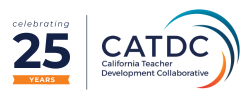Why the Horse Remains Central to the Thacher Experience

The nature of the Thacher Horse Program and the gifts it bestows can test the limits of reason and language. As the program’s longtime director Cam Schryver says, “I don’t think that all of the lessons, the things you learn, can exactly get expressed or quantified… there are parts that go out to the limit of my ability with language.” It’s not just Cam. That “something about a horse” can be hard to put into words. In part, it may be because the Horse Program brings about transformations that are in themselves inexplicable, almost alchemical. The impact of this program and its important role at Thacher is more easily described than explained.
Why the Horse Remains Central to the Thacher Experience
To many, Thacher is “that school with horses.” This should surprise nobody; the Horse Program is arguably our most distinctive tradition, bound tightly to our history and values. But what is sometimes hard for outsiders to understand is why we persist in such an expensive, risky, and time-intensive program, one other schools don’t seem to have a need for. In the days of founder Sherman Day Thacher, horses were a utilitarian necessity, a way to get to town and back with the only mode of transportation available. What Mr. Thacher quickly learned, however, was that there was something more powerful taking place than simply getting from point A to point B. Long before Thacher became coeducational, he used to say, “there’s something about the outside of a horse that’s good for the inside of a boy.”
Mr. Thacher realized that horses are good for young people. Deeply good. Which is why new Thacher students, 90 percent of whom have never ridden before, is assigned a horse. We require that they feed and care for this horse. We teach them how to work with it and ride it. It isn’t always easy. Horses need food and water every day, which can mean rising before the sun, and dragging yourself up to the barns on cold, damp mornings. It means using a shovel and a rake and a wheelbarrow. Put this way, it all starts to sound a little crazy, this school with the horses.
But there is a deep logic to it. The horse brings practical work connected to real consequences; this creature depends upon on us. There are risks (and what adolescent does not crave risk?) that can deliver high-energy excitement and thrills as well as sudden encounters with the ground. Lessons like these get your attention and last a lifetime. Our Horse Program teaches partnership and strengthens community; students bond with their horses, their peers, and with the adults and upperclassmen who teach and mentor them. Our arenas, fields, and trails afford a heightened connection to nature, an alternative way of seeing the world and being in it. In an increasingly digital world, this unapologetically analog activity connects the rider not only to this other being, but to natural rhythms and centuries of human culture dependent on horses. It also sets the stage for developing self-mastery and self-knowledge in ways that purely academic pursuits rarely do.
But these explanations miss the full-gallop fun and deep satisfaction that also motivate and reward the effort. They don’t convey the exultant look on the face of the young rider who, though a novice a few months ago, has just plucked a silver dollar off the ground at a gallop. They don’t articulate the intense emotions on the faces of freshmen bidding their horses goodbye at year’s end. How do they get there? It’s a deliberate journey.
It Starts on Day One
One of the first things a new student at Thacher does is head to the barns to pick up riding gear and take a short, simple riding assessment that helps our riding instructors place students with the right horse and in a riding group that matches their level of experience and skill. Freshmen are paired for the year with a 1,500-pound animal who naturally isn’t interested in SSAT scores or GPAs, hometowns, or family backgrounds. Riders will work the same small groups every day, learning the basics of feeding, saddling, mucking, and, of course, riding. Many things will become a familiar routine: getting up early every morning to clean your horse’s stall before class, saddling up your horse in the afternoon for a couple of hours of training and practice, feeding in the early evening, even on weekends.
Loping into Fall and Winter
The first few months in the Horse Program are packed with firsts and memorable milestones. The major long-term goal on the horizon: passing the rider’s test, which assesses various elements of horsemanship and determines whether a student is ready for more independence and a greater degree of self-directed training. Riding can be a complex, multi-leveled skill that requires commitment and determination, not to mention plenty of patience. Fall also brings horse camping trips, as small groups of freshmen and riding instructors head out into the Sespe Wilderness on horseback, generally spending a long weekend in the backcountry behind Thacher before making the iconic ride “over the ridge” and back to campus. As the weeks go by, students find themselves accomplishing more and more, and as the fall and winter seasons come and go, students pass their riding tests and begin a more independent afternoon riding regimen. Meanwhile, Fall Family Weekend is the first big opportunity to demonstrate their accomplishments to their families and the Thacher community.
Competing for the Blue, Green, or Orange
With spring comes Gymkhana season, the competitive culmination of the year’s hard work. Over the next few months, riders further hone their skills and test and deepen their horse-and-rider partnerships as they compete in a variety of gymkhana races, from barrel and pole racing to ring spearing and silver dollar pick-up. Led by seasoned upperclassmen riders, every Saturday throughout the spring the freshmen vie for points on one of three teams (Blue, Green, or Orange) for the ultimate Big Gymkhana victory. They race against the clock in different individual and team events, testing their endurance, patience, and emotional strength. Riders learn about having good days and bad days; about perseverance and teamwork; how to fail, how to recover, and how to help someone else through the same thing.
Sure, there will be times in Thacher’s Horse Program when riders feel sore and tired, frustrated and even fearful. But, if they commit to the experience, their self-confidence and skills expand. They develop friendships born in the cool morning dawn of the barnyard and the bright afternoon light of the Gymkhana field. The rider and the horse become partners in an adventure that is all the more rewarding for its real and meaningful challenges.
After the Horse
After freshman year, many of the riders return to the riding program to continue advancing their skills, to help coach and encourage the next year’s batch of new riders, and sometimes to take on advanced challenges such as working with green horses or competing outside of the school. But many choose not to ride again at all. In either case, the benefits of the year carry over into other areas of life, at school and in the years to follow. These benefits are not always easy to quantify or explain, but they are real, and they are enduring. To know this you need only ask a Thacher alum about his or her riding experience. And if you do, make sure you have a little time to spare, because there is definitely something about a horse.
 Chris Land is the Director of Communications at Thacher School. He also serves on the Senior Exhibition Committee and enjoys working with the student media heads. His experience prior to Thacher includes teaching college English and composition courses; directing marketing communications for the Illinois Chapter of the Nature Conservancy; and launching an art, antiques, and rare books fair.
Chris Land is the Director of Communications at Thacher School. He also serves on the Senior Exhibition Committee and enjoys working with the student media heads. His experience prior to Thacher includes teaching college English and composition courses; directing marketing communications for the Illinois Chapter of the Nature Conservancy; and launching an art, antiques, and rare books fair.
